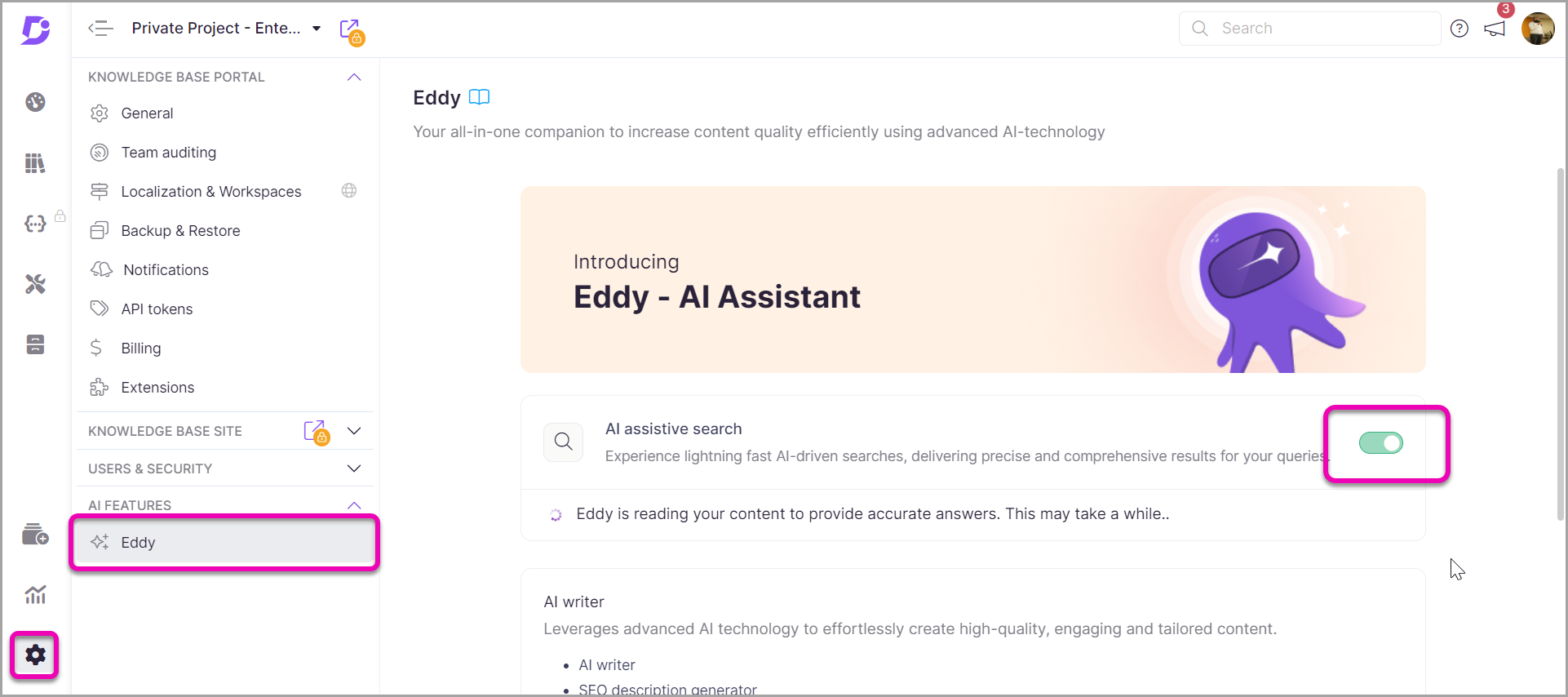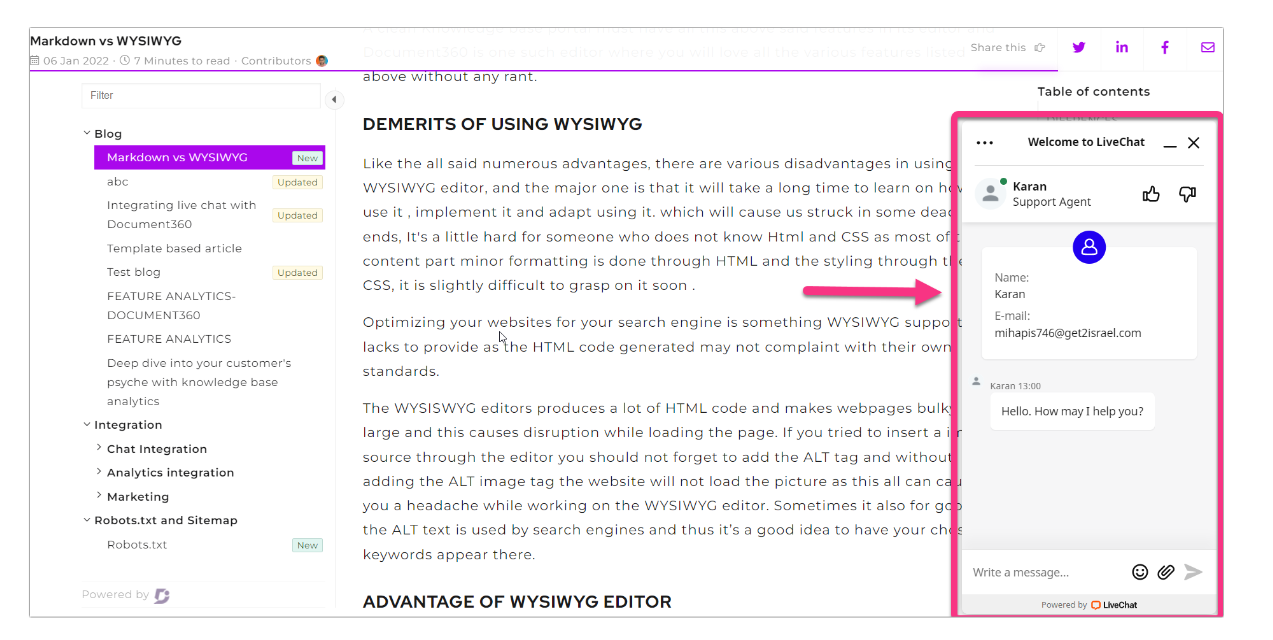Are you limiting your business growth only to balance your customer service cost?
However, this practice can be heinous to your overall business health.
Keeping your service cost low doesn’t have to overshadow your customer experience.80% of customers say a company’s experience is as important as its products and services. There are other ways to deal with never-ending customer queries without breaking the bank. It starts with designing your workflow so that your customers are capable of self-service and leveraging q!~technology to resolve issues without the assistance of a customer service agent.
Poor customer service is your brand’s biggest red flag. You need to focus on increasing your agents’ productivity, helping them implement AI-powered knowledge base support, and measuring KPIs.
If you’re planning to slash the CS cost while increasing CX, here are 9 proven strategies (tried and tested) to reduce customer support costs. We’ll reveal how traditional approaches are negatively impacting your customer support cost and how each of these strategies can delight your customer and help you maximize profits. Each saved penny is the result of an efficient workflow. Let’s check how!
Why Is It Necessary To Reduce Customer Support Costs?
High customer support costs can significantly eat into profit margins. Cost reduction can help balance expenses, ensure financial stability, and ensure the long-term sustainability of the business. The customer support team is the backbone of the business. They’re often known as the contact center team, who don’t work in the limelight but are very impactful.
Cutting the customer support cost doesn’t mean you start slashing agents’ salaries or providing them with underprivileged work environments to save your cost. This can worsen and result in high attritions, low morale, and poor service quality, ultimately exhausting business savings.
Reducing customer service costs (in the most optimal way) is a great idea, as the saved cost helps scale and provides competitive costs to customers, which in turn attracts more business.
Customer service is the litmus test for customers’ buying experiences. A survey by PWC says 73% of the buying experience is influenced by customer treatment. Here’s how you do it naturally without compromising the quality of support and serving your customers the best.
How Do You Calculate Customer Service Costs?
Before you start reducing your customer service costs, we suggest analyzing and calculating your expenditure on each ticket. If your expenditure is maximizing your profits, you may be on the verge of debt. Many people will tell you how to cut costs, but very few will walk you through the calculations.
When you calculate the cost, you will uncover the areas that need extra drilling, such as average handling time, proper utilization of technology to automate responses, or consideration of strategic outsourcing.
So, there are basically three types of annual costs for your customer support team that is:
- Personnel Costs
- Operational Costs
- Overhead Costs
First, calculate your Customer Service Expenditure. It can be employee salaries, equipment, software subscriptions, and other miscellaneous expenses like travel and investments. Your accounting department can help you extract the exact cost. After you have your total customer service expenditure, move on to the Total Number of Support Tickets Resolved.
Let’s assume your total customer service expenditure for March was $3600.Your team resolved 1200 support tickets in March.
Using the formula, the calculation would be:
Cost Per Support Ticket=Total cost of customer service/Total number of tickets resolved in a period of time
Cost per support ticket=3600/1200=$3 per ticket
Also read: Guide to Reduce Customer Support Tickets
9 Proven Strategies To Reduce Customer Support Costs
Unify the customer support channels
Be where your customers are. Unify customer communication threads to provide seamless support. When a customer contacts you via a toll-free number and then switches to a social media platform, offer an immediate solution without wasting time digging through their history.
Combine your support channels (emails, chats, calls, social media messages) into a single platform. Train your agents to handle all these channels efficiently instead of having separate agents for each platform.
Many agents can only handle phone calls and pass chat inquiries to a different team, which delays resolution times and increases staffing costs. By unifying channels and training agents to manage all types of support, you can improve efficiency, reduce costs, and enhance customer satisfaction.
Provide interactive self-service resources
67% of customers prefer using a form of self-service rather than talking to a customer service representative. A customer self-service portal means that fewer requests are sent to your customer support team. You can employ fewer agents to handle the same volume of customers, which is good news for your budget. A self-service interaction costs pennies when compared to the same interaction with a human agent, which costs dollars. You can expand your customer support team with fewer resources and save money in the long run.
One example of customer self-service is a knowledge base. A knowledge base contains in-depth guides and resources that take your customers through the most common issues that might arise with your product. A knowledge base can contain text, video, and audio resources to provide customers with different avenues to approach self-service support.
Find out how Document360 can help you to reduce support tickets!
Book A Demo
Offer training and development of Customer service staff
When agents are well-trained, the chances of error are less. And the customer satisfaction level tends to be high.
While training agents, you must ensure that they are well-aligned with your product knowledge. Document360 provides an easy way of creating, organizing, and sharing training materials required for employees and organizations. Training is an expensive affair; using knowledge management solutions can simplify the exchange of information. Agents can learn not only at the time of onboarding but even when they’re stuck resolving a complex query. They can always refer back to documents created by internal employees.
Automate routine manual processes
Too many manual tasks can overload your contact service agents with work, eventually increasing the employee attrition rate. 52% of support leaders are investing in tech that helps agents with workload. Here are ways you can automate agents’ repetitive tasks.
Ticket Routing and IVR
Smart classification based on AI and automation can speed up agent ticket routing. When a call center is loaded, resolution time slows. An automatic call distributor (ACD) can place each incoming call in a queue and route it to the correct person or department automatically using this call management feature.
Call routing combined with IVR is game-changing. IVRs allow customers to use speech recognition to interact with a computer-operated telephone system designed to handle a high volume of calls.
Follow Up reminders
Automated follow-up reminders help ensure that no customer inquiry goes unanswered. This system improves customer satisfaction and reduces repeat contact.
Predictive dialing
Automates the process of dialing phone numbers, and connecting answered calls to available agents. Predictive dialing filters out unanswered calls, disconnected lines, busy signals, and voicemails, ensuring agents only handle live connections. This prevents agents from spending time on unproductive calls, reducing overall call duration and increasing efficiency.
Canned responses
Canned responses provide agents with pre-written templates for common inquiries, eliminating the need to craft individual responses for repetitive questions. Agents can quickly insert relevant responses, reducing handling time for each interaction.
Also Read: How GenAI tools with knowledge base integration can reduce customer support tickets?
Deploy AI-powered knowledge base for 24/7 support
With Document360’s AI assistant Eddy your customers can easily find answers to their queries in the blink of an eye without queuing for customer support. With the power of AI, customers experience the next level of self-service support which is more interactive and accurate.
You can ask Eddy to find information, ask a question, prepare a template, or prompt the steps involved in the process. It immediately supports you with the most relevant answers and recommends related articles for additional support.

If your customers cannot find the answers in the knowledge base, their feedback is recorded, and insights are generated based on user responses. This helps your team fine-tune the content that will be helpful for the customers. Another advantage is that it provides consistent customer support 24/7 to a global audience.
With Document360 you leverage customer support with the best self-service system and thereby reduce the workload on customer support.
See what our customers says,
Aarthi Kumar, Principal Knowledge Base Manager at Cascade says,
“With Document360’s rich features, we envision our customers self-serving soon, reducing the load on our customer support team. For a company like Cascade, it is very important for us to understand from which country or region we get the most visitors, so we give marketing and sales initiatives in those areas more emphasis. The rich metrics we receive provide that. Since adopting Document360, we have been adding 30% more articles to our knowledge base every quarter.”
Take a look at our video on Cascade case study
Use live chat support
This is the most used method to cut down on the efforts of contact center agents.
44% of support teams are spending on providing live chat support.
You can reduce you inbound leads with live chat support, which can resolve a chunk of your customer queries using your knowledge base content created.

Document360 helps you integrate LiveChat with your Document360 knowledge base. LiveChat also cuts costs, as a single agent can talk with several customers simultaneously and still retain high customer satisfaction rates.

Focus on staff retention
Investments in agent retention, training and technology notwithstanding, many agents continue to fall short of their potential. Seventy-seven percent of agents and 74% of mobile workers report higher and more complex workloads than one year ago, according to a new study by Salesforce. While this pressure is impacting agent morale (56% of agents and 57% of mobile workers say they are experiencing burnout).
The study also illustrates a multitude of challenges that go along with being an agent. Sixty-five percent of agents and 66% of mobile workers agree that their cases are more complex than ever.
69% of service decision-makers say agent attrition is a major or moderate challenge, make it difficult for agents to provide exceptional customer service.
To bridge the gap between the desired state and reality, contact centers must understand that while scaling the business is important, supporting and training the existing workforce, automating manual processes, and hiring qualified customer service staff are equally, if not more important. Organizations can unlock their agents’ full potential and drive better outcomes by leveraging key performance metrics and tailoring strategies to improve agent performance.
Invest in Employee Wellness Programs
Tired, exasperated agents lead to less effective interactions, higher customer churn, and, ultimately, less revenue. Rested, engaged, and motivated agents thrive and exceed customer expectations, thus improving satisfaction and earning more revenue.
Recent studies provide irrefutable evidence that empathy is the most important tool in a customer service agent’s arsenal. Incorporating emotional intelligence (EQ) into the customer experience landscape increases loyalty and engagement.
Agents with a high EQ can better understand what their customers need and then follow up with overwhelming precision. Making EQ and empathy central to customer service is key to capturing market share and differentiating your brand from the rest. This approach requires 360-degree training and a specific focus on these skills in the context of the customer experience (CX) ecosystem.
To support agents in developing and applying these skills, it is essential to create an open culture where agents feel comfortable discussing their challenges and concerns without fear of negative consequences. Encourage open communication between agents and managers and actively work to eliminate the stigma surrounding mental health issues.
Don’t Cut The Cost, Bring The Right Tech Stack with Document360
Ultimately, given how competitive customer service is today, the goal should be to optimise call center performance with technology, the right processes, and the right software to enhance the overall customer experience.
Don’t settle for low-quality support that fails your customers’ expectations. Choose viable methods, such as quick resolutions, knowledge base portals, and AI assistants, for your agents to retain them and increase their productivity.
Choose Document360 and experience the difference a truly comprehensive, cutting-edge platform can make for your agents, customers, and bottom line. Take the first step towards transforming your customer and elevating your customer service. Fill out our contact form today to discover how Document360 can help you achieve your goals and drive success in the ever-evolving world of customer experience.
Also Read: Proven Strategies to Reduce Training Costs




 –
– 

